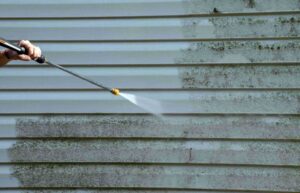Stone Patio Care: The Top Paver Stone Maintenance Tips
Patios can give you a return on investment of over 100%, and they can up the value of your home very quickly.
But not if they’re old and dirty.
While your stone patio can withstand the outdoor elements pretty well on their own, you have to help it along sometimes to keep them looking clean and new.
Here are a few important patio maintenance tips you should know.
Killing and Preventing Weeds
The weeds and moss that grow in the gaps between your stone bricks can be a nuisance for several reasons.
First of all, they don’t look nice. A few weeds springing up through your patio can make your entire backyard space feel old and ugly.
But weeds can also push your stone bricks apart if you leave them on their own for too long. In other words, weeds can make your patio lumpy or even change the shape of your patio over time.
Because of this, killing and preventing weeds should be a large part of your patio maintenance routine. And there are a few ways to make that happen.
Weed Killers
If you already have a lot of weeds on your hands, the best way to get rid of them is to buy a quality weed killer. Pulling all the weeds up by hand takes a long time and doesn’t always remove all the roots underground.
That’s why a weed killer is a faster and more thorough solution.
Just make sure you get a weed killer that won’t damage or stain your stone patio. If you have any concerns about your weed killer, try testing it on a small section of your patio first.
Polymeric Sand
Polymeric sand won’t kill weeds, but it’ll prevent more from growing in the future. This sand will also keep bugs from living between your patio stones, which will keep them away from your home.
You can buy polymeric sand at most any home improvement or hardware store. Here’s the best way to use it.
Pull Any Weeds
Before you can use your polymeric sand, you have to get rid of any weeds that are already present. Again, the best way to do this is with a weed killer.
Dump the Sand into the Stone Joints
Use a small cup to pour the polymeric sand into all the stone joints. If you don’t have the time to go over every crack, you can pour the sand over your entire patio instead.
Sweep Over the Sand with a Broom
Sweep all the extra sand off your patio. Make sure you go over each stone joint. This will help push the sand down into the joint and ensure you don’t miss any nooks or crevices.
Pat the Sand into Place
Tap each stone with a rubber mallet. This will jostle the sand surrounding them and help it settle into place better. You can also gently pat the polymeric sand to ensure it sets correctly.
Remove Excess Sand
Once you’ve tapped the sand into place, go back over your patio and remove any remaining sand. Polymeric sand containers colorant, so any leftover sand can stain your patio. The best way to get rid of extra dirt is to use a leaf blower.
Spray Your Patio with Water
Use a garden hose to spray a light mist of water over your patio. Don’t use too much water pressure or allow any puddles to gather on the stone. This can cause the polymeric sand to wash out of the joints.
Repeat this misting process another three to four times over the course of an hour. Once you’ve finished, stay off your patio for the next 24 hours.
Washing and Removing Stains
Over time, a layer of dirt, bird poop, grime, and other debris can form over the surface of your patio. This can make your patio look old and faded.
You can fix this problem by giving your patio regular cleanings. And there are a few different ways to do this.
Pressure Washer
Pressure washing your patio doesn’t just remove dirt. It also cleans any mildew or harmful bacteria off the surface of your stone.
This is the most effective way to clean your patio, but if you don’t know what you’re doing, it can also be dangerous. Because of this, you shouldn’t try to do any type of pressure washing by yourself. Call a professional instead.
You should make time to pressure wash your patio every other year or so, depending on where you live.
Mild Detergent
Mixing a mild detergent with water can help you remove minor stains or dirty spots. Pour the mixture over the stain you want to clean and scrub it with a wire brush.
Again, test both the detergent and the wire brush on a hidden part of your patio to make sure they don’t damage your stone.
Reseal
Resealing your stone patio will help protect it from weather, dirt, and other debris. This will also prevent stains from absorbing into the stone.
You should reseal your patio every two to three years.
Make sure you use a sealant that’s designed for your type of stone. You can do this part yourself, just make sure you follow the directions for whatever sealant you choose.
How to Maintain Your Stone Patio
Maintaining your stone patio doesn’t take a lot of time or effort. If you know what type of care your patio needs and perform it at the right time, you can spend most of the year enjoying your patio instead of working on it.
Do you need some help pressure washing your patio?
Make sure you click here to check out some of our services!


